Mr. Sato turns into a historical figure through his first-ever wet plate photography session
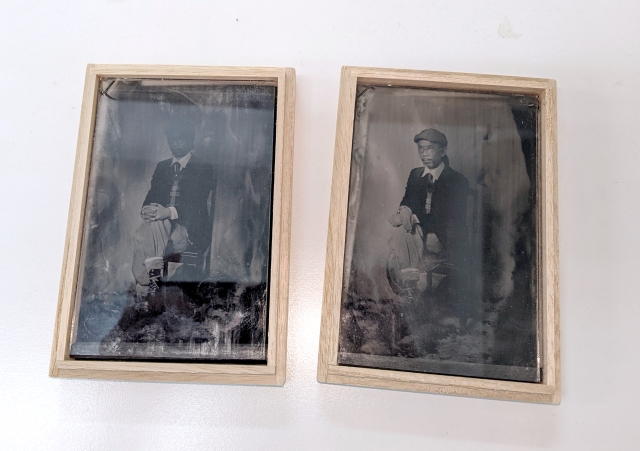
The process was slightly grueling, but the results were well worth it!
With our always-at-hand smartphones, anyone can take a picture at any moment of the day, but in the past, it wasn’t nearly so easy. One of the earliest forms of photograph technology was known as wet plate collodion photography, which captured images in a light-sensitive solution on a plate of glass or metal, rather than on film. It was a difficult and time-consuming process that required knowledge of chemistry as well as immediate access to a dark room, or your photo would not develop properly. The result was that silver-hued kind of portrait that you often see of 19th-century figures.
Did you know wet-plate photography is still used today? In fact, right now, at an event in Tokyo, you can pay to have a photo done of you that looks like it was taken 170 years ago when wet-plate photography was common. At the “Daily Life Antique Market” at the Seibu Ikebukuro department store in the Tokyo neighborhood of Ikebukuro, a booth run by the Nippori-based wet plate photography studio, Light and Place, will do it for you for just 10,000 yen (US$86.93).
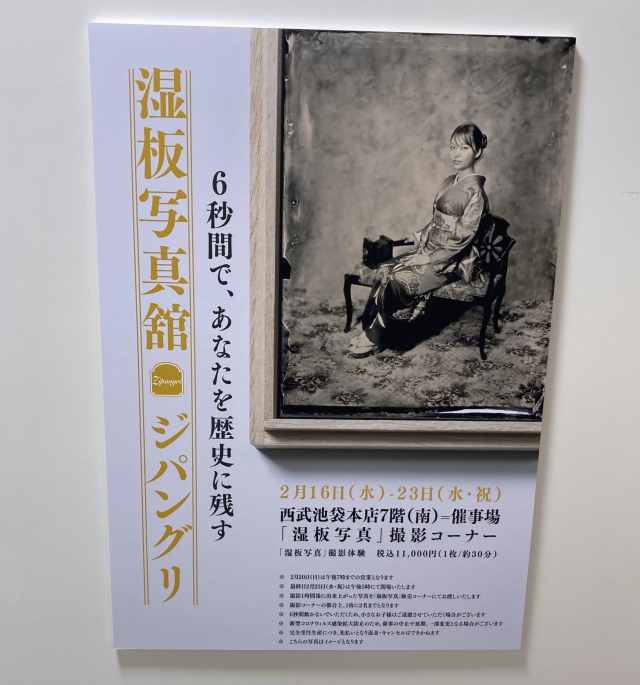
Light and Place not only do wet plate photography portraits but also offer their services to period drama and theater productions as well as for magazines. At their booth at the Antique Market, you’ll get a single photo to take home, but it isn’t any old printed photo; it’s a portrait on an actual glass plate. Our own Japanese-language reporter Mr. Sato went to try it out, and the result was surprisingly cool!
But it was pretty challenging, too. Have you ever noticed that people in historical portraits always have a neutral expression? It’s because wet-plate photography takes a long time to capture an image, and it was easier to hold a relaxed pose and facial expression for the amount of time needed. At the booth, it took about six seconds for the image to be captured, and during that time, Mr. Sato couldn’t move at all.
Holding still in a stiff posture without his head or body twitching or shifting for six whole seconds was harder than it looked. You might think six seconds isn’t that bad, but when even breathing in can make your chest move, it feels like a long time. And since moving your eyes often results in turning your head, you also have to focus on a single spot, all while trying not to breathe. After doing it himself, Mr. Sato wasn’t surprised that most people opted to remain expressionless back in the day.
The process is also extremely delicate and can be affected by temperature and humidity, and since it takes about an hour to process each photo, there are challenges and risks at every step. Mr. Sato actually had to go twice to get his portrait done because the first time some trouble occurred. After this experience, Mr. Sato appreciated more than ever how easy it is to take photos these days.
Typically you only get one photo from the shoot, but because of the mishap with his first photoshoot, Mr. Sato got a second one for free. They came in these nice-looking, embossed wooden boxes. Mr. Sato wondered what waited for him inside?
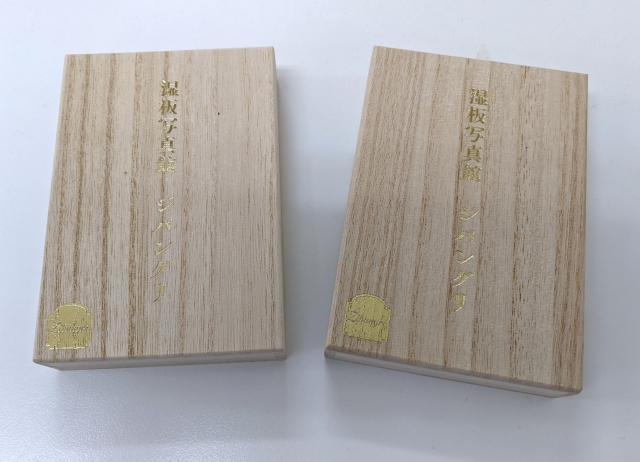
Two very old-timey portraits!
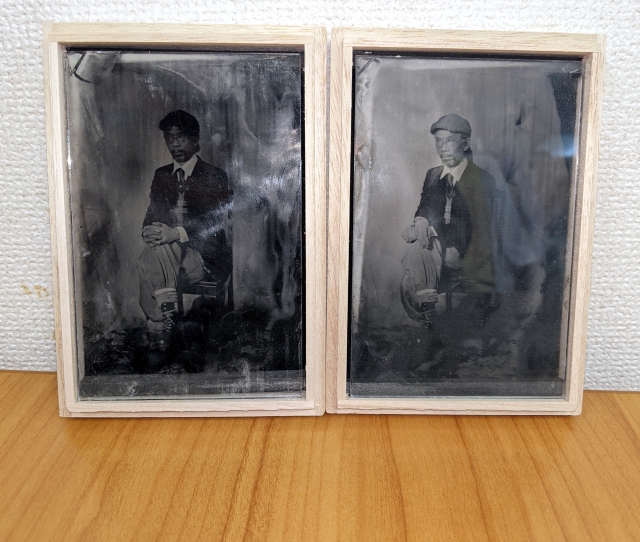
As it turns out, taking pictures of a glass plate is rather hard, so Mr. Sato enlisted the help of our resident pro photographer, Tasuku Egawa. Thanks, Tasuku!
The first photo faced challenges with the lighting (which uses a specialized ultraviolet light), so it turned out a bit dark.
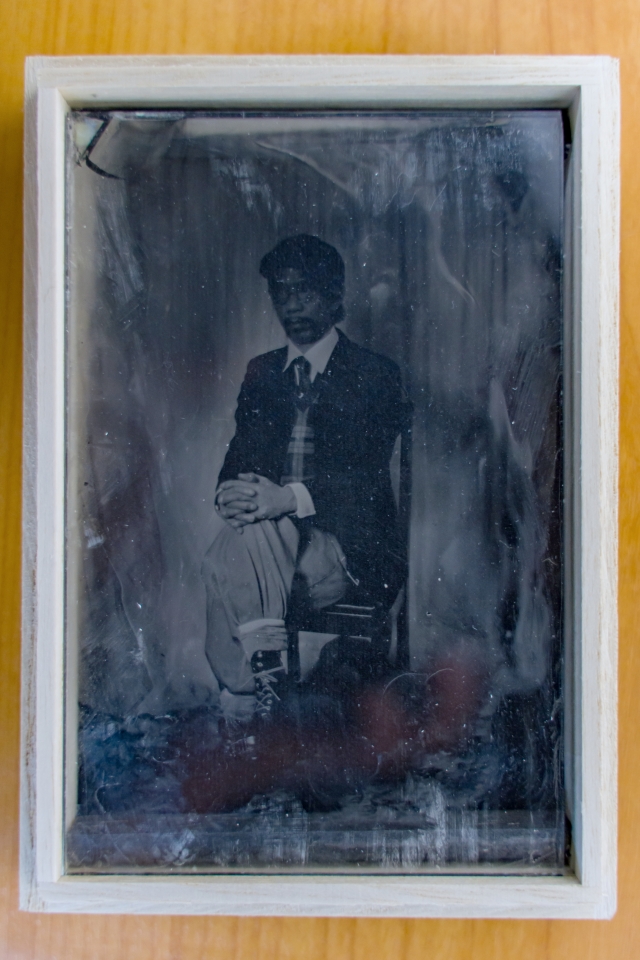
The second one had a much better adjustment and came out much brighter. Though he’d taken it just an hour before picking it up, it really had the feel of a portrait from the 19th century.
▼ The snappy outfit, which included glasses Mr. Sato borrowed from the studio (since normal glasses come out black in the UV lighting used), really helps add to that feeling.
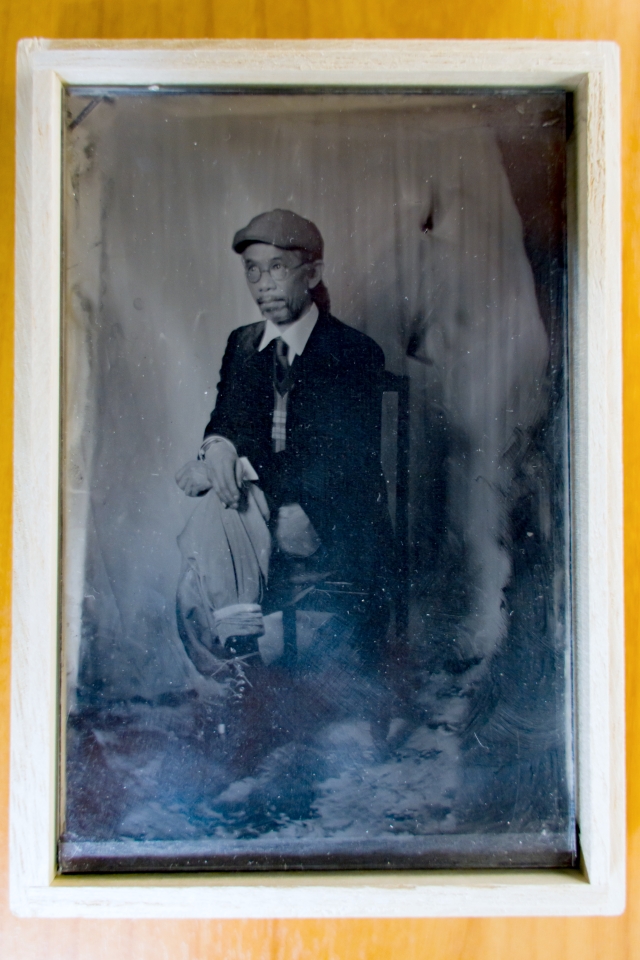
To make it even more historic-looking, Mr. Sato loaded a picture of it into a photo editing program and adjusted the brightness and color. It really looks like a picture taken 150 years ago!
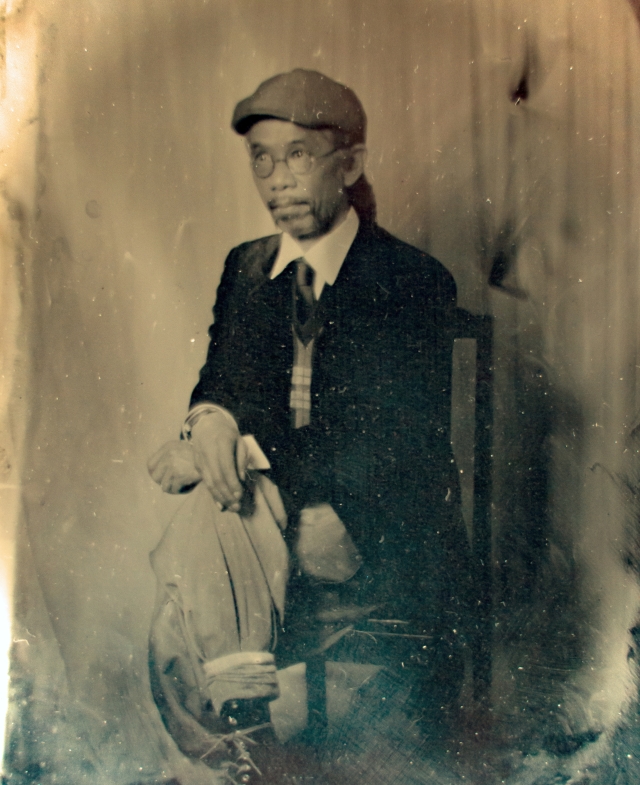
If you want your own Meiji-era portrait, head over to the event in the Seibu Ikebukuro department store, which is connected to the east side of Ikebukuro Station, before February 23. And if you want more cool photoshoot ideas, try transforming into an old Hollywood movie star, a Takarazuka actress, or a courtesan or a samurai!
Images © SoraNews24
● Want to hear about SoraNews24’s latest articles as soon as they’re published? Follow us on Facebook and Twitter!
Credit:

0 comments:
Post a Comment